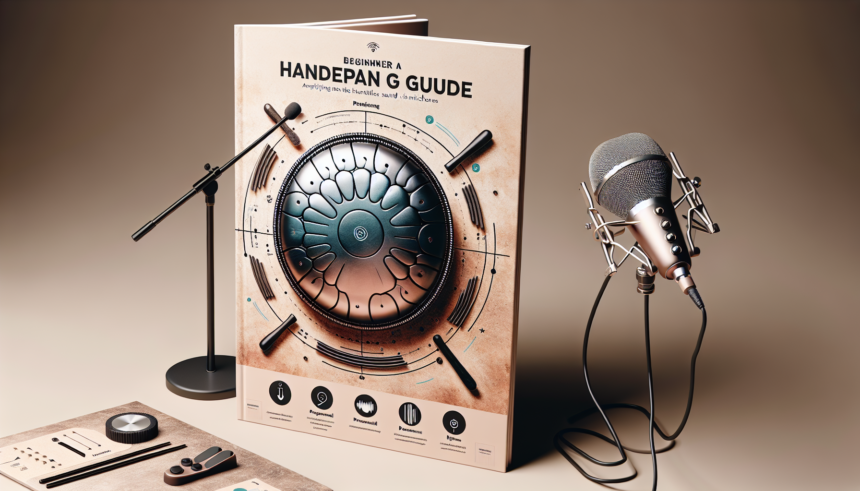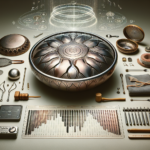<!DOCTYPE html>
<html lang="en">
<head>
<meta charset="UTF-8">
<meta name="viewport" content="width=device-width, initial-scale=1.0">
<title>Beginner’s Guide to Amplifying Your Handpan with Microphones</title>
</head>
<body>
<header>
<h1>Beginner’s Guide to Amplifying Your Handpan with Microphones</h1>
</header>
<section>
<h2>Introduction</h2>
<p>The soothing and ethereal sound of the handpan is something that captivates musicians and listeners alike. Its unique, resonant tones make it a remarkable instrument both in solo performances and ensemble settings. Amplifying your handpan with microphones can elevate the sound, providing clarity and presence during performances or recordings. However, for beginners, this might seem like a daunting task. Fear not; this comprehensive guide will walk you through the basics of amplifying your handpan to create enchanting and resonant music.</p>
</section>
<section>
<h2>Understanding the Handpan</h2>
<p>Before diving into amplification, it's essential to understand what a handpan is. A handpan, sometimes referred to as a hang drum or steelpan, is a percussive instrument made from two sheets of steel, shaped into a convex lens. The top side features a central note and several tone fields, which create different pitches when struck.</p>
<p>The handpan's acoustic properties are inherently soft; their sound is gentle, yet profoundly rich in harmonics. This makes them perfect candidates for amplification, especially in larger venues or recording sessions where every sound nuance is vital.</p>
</section>
<section>
<h2>Why Amplify?</h2>
<p>Amplifying your handpan goes beyond just increasing its volume. Here are a few reasons why amplification is beneficial:</p>
<ul>
<li><strong>Clarity and Projection:</strong> Amplification ensures that each note and harmonic overtone is heard, especially in a band setting or open outdoor venue.</li>
<li><strong>Enhanced Sound Quality:</strong> High-quality amplification can bring out the subtle nuances of the handpan's sound.</li>
<li><strong>Recording:</strong> For professional and home studio recordings, using a microphone provides the best way to capture the authentic sound of a handpan.</li>
</ul>
</section>
<section>
<h2>Choosing the Right Microphone</h2>
<p>Microphone selection is crucial in ensuring your handpan's amplified sound remains true to its natural tone. Here are a few factors to consider:</p>
<h3>1. Condenser Microphones</h3>
<p>Condenser microphones are known for their sensitivity and ability to capture detailed audio. They are generally well-suited for handpans due to their broad frequency response and high SPL (Sound Pressure Level) handling. Some popular condenser mics for handpans include:</p>
<ul>
<li><strong>Rode NT1-A:</strong> Great for studio settings with its extremely low self-noise.</li>
<li><strong>Audio-Technica AT2020:</strong> A budget-friendly option that delivers crystal-clear recordings.</li>
</ul>
<h3>2. Dynamic Microphones</h3>
<p>Dynamic microphones are more robust and less sensitive than condensers, making them suitable for live performances. While they may not capture the subtleties as well as condensers, popular dynamics like the Shure SM57 are versatile and effective in a band setting.</p>
<h3>3. Placement</h3>
<p>The microphone placement plays a critical role in capturing the optimal sound quality. Here are some tips:</p>
<ul>
<li>Place the microphone approximately 6 to 12 inches above the handpan to capture a balanced sound.</li>
<li>Experiment with angles to bring out different characteristics of your handpan.</li>
<li>Use two microphones for stereo sound—one above the center and one near the edge for better spatial representation.</li>
</ul>
</section>
<section>
<h2>Setting Up Your Amplification Rig</h2>
<p>Now that you've chosen your microphone, it's time to set up your handpan amplification rig. Here's a step-by-step guide to get you started:</p>
<h3>1. Equipment List</h3>
<p>Before setting up, ensure you have the following equipment:</p>
<ul>
<li>Microphone(s)</li>
<li>Mic stand(s)</li>
<li>XLR cable(s)</li>
<li>Audio interface or mixer</li>
<li>Amplifier or PA system</li>
</ul>
<h3>2. Connecting Your Microphone</h3>
<p>Connect your microphone to an audio interface or a mixer using an XLR cable. Ensure everything is securely plugged in.</p>
<h3>3. Adjusting Levels</h3>
<p>Adjust your levels on the mixer or interface. Start with the gain low and gradually increase it to ensure you do not distort the sound.</p>
<h3>4. Adding Effects</h3>
<p>You can enhance your sound with external effects. Reverb is a popular choice for handpans to add depth and ambiance to the music.</p>
</section>
<section>
<h2>Troubleshooting Common Issues</h2>
<p>Even with the best setup, you might encounter some issues. Here are a few common problems and solutions:</p>
<h3>1. Feedback</h3>
<p>Feedback occurs when the microphone picks up the amplified sound from the speakers. To minimize it, reduce the gain, reposition the microphone, or use a feedback eliminator plugin.</p>
<h3>2. Unwanted Noise</h3>
<p>If you hear hiss or hum, check your cables and connections. Ensure you’re using balanced cables and route them away from power cables to avoid interference.</p>
<h3>3. Uneven Sound</h3>
<p>If your sound is unevenly distributed, try repositioning your mic or using dual-mic setups to capture different tonal areas.</p>
</section>
<section>
<h2>Conclusion</h2>
<p>Amplifying your handpan opens up new dimensions of performance and recording possibilities, allowing you to share its magical sound with a larger audience. With the right equipment and setup, you can ensure your handpan's unique tones are heard with clarity and depth. Remember, practice and experimentation are key to finding the best sound for your set-up. Happy music-making!</p>
</section>
<section>
<h2>FAQs</h2>
<h3>1. Do I need a specific brand of microphone for handpans?</h3>
<p>While there is no one-size-fits-all microphone, some brands like Rode, Shure, and Audio-Technica have models that are popular among handpan players for their quality and sound clarity.</p>
<h3>2. Can I use a guitar amp to amplify my handpan?</h3>
<p>While technically possible, guitar amps are not designed for handpans and might not deliver an accurate sound. It's better to use a PA system or acoustic amplifier for quality amplification.</p>
<h3>3. How do I avoid feedback during live performances?</h3>
<p>To avoid feedback, ensure your mic is not directly facing the speakers, reduce gain appropriately, and consider using a feedback suppressor if the issue persists.</p>
<h3>4. Is it possible to use wireless mics for handpan amplification?</h3>
<p>Yes, wireless microphones can be used for handpan amplification, especially in live settings where mobility is essential. Ensure to choose high-quality wireless systems to maintain sound clarity.</p>
<h3>5. Can I amplify my handpan without a microphone?</h3>
<p>Other amplification methods, such as pickup systems, exist, but microphones offer the most accurate sound reproduction for handpans due to their complex overtones and resonance.</p>
</section>
</body>
</html>Beginner’s Guide to Amplifying Your Handpan with Microphones

Leave a comment




